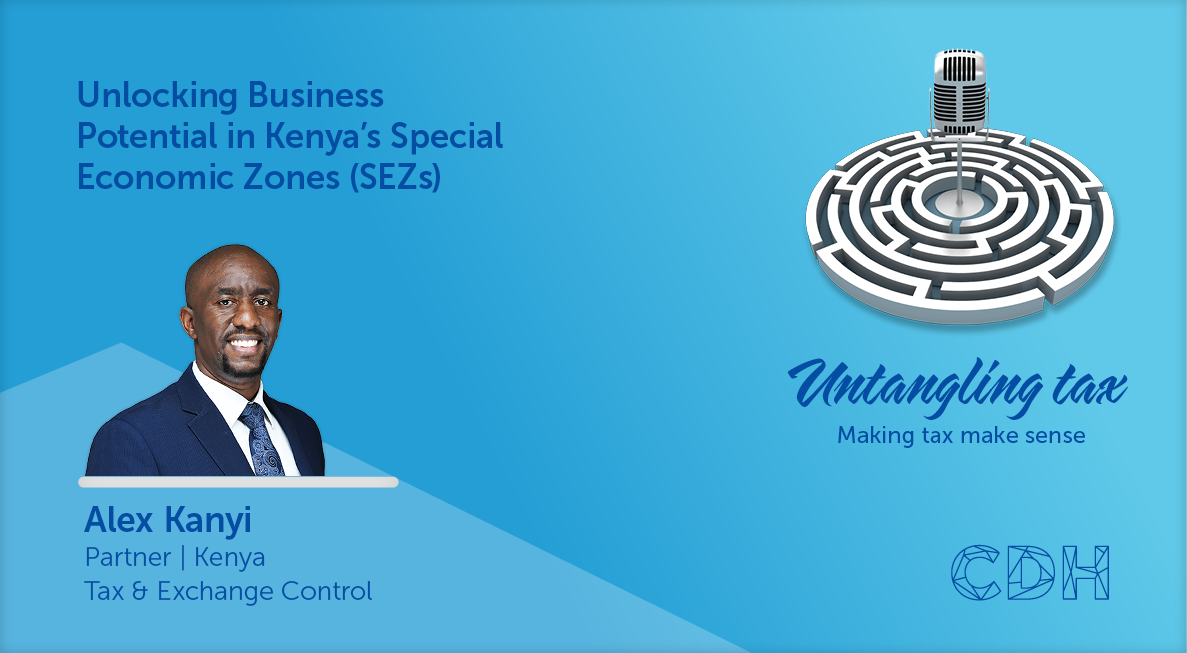Draft Mining Charter III: More uncertainty amid the certainty?
The Draft Charter is stated to apply to pending mining right applications, existing and new mining rights. It is also stated to apply to prospecting rights as contemplated in s17(4) of the Mineral and Petroleum Resources Development Act, 2002 (MPRDA). Section 17(4) merely states that the Minister can request an applicant for a prospecting right to comply with the object in s2(d) (meaningfully expand opportunities for historically disadvantaged South Africans to participate in the mining industry). The definitions of “Right holder” and “Existing right holder” in the Draft Charter refer specifically to holders of mining rights. The application of the Draft Charter to prospecting rights is thus unclear.
The Draft Charter does, potentially, provide some relief to junior miners, who can make representations to the Minister regarding the extent to which the Mining Charter elements shall apply to them. However, “junior miner” is not defined and the relief that may be granted is entirely discretionary.
The Ownership element, set at 30% BEE shareholding, is ring fenced and requires 100% compliance at all times, other than as set out in the Draft Charter. The 30% BEE shareholding must be distributed as to:
- a minimum of 8% (of which 5% is non-transferable free carried interest) to qualifying employees within a period of five years from the effective date of a mining right. Note that “qualifying employees” excludes employees who already own shares in the company as a condition of their employment, except where such holding is a “Mining Charter” requirement;
- a minimum of 8% (of which 5% is non-transferable free carried interest) to host communities (in the form of a community trust as prescribed) within five years from the effective date of a mining right; and
- a minimum of 14% shareholding to a BEE entrepreneur.
A holder can claim a maximum of an 11% offset credit against the BEE entrepreneur allocation for beneficiation on the basis of a DMR approved “equity equivalent plan”. However, the baselines for beneficiation are still required to be determined by the Minister.
A pending application accepted prior to the coming into operation of the Draft Charter shall be processed and granted in terms of the requirements of the Mining Charter, 2010 with a minimum of 26% Black Person’s shareholding, and the holder will be required to increase the BEE shareholding to 30% within five years of the effective date of the mining right. Whether such 30% will be required to reflect the stipulated distribution to employees, communities and black entrepreneurs is not clear.
In similar vein, the holders of existing mining rights also have a five-year period within which to increase their BEE shareholding to 30% and have partially benefitted from the judgment obtained by the Minerals Council SA in regard to the ‘once empowered, always empowered’ principle. The recognition of continuing consequences includes historical transactions concluded on units of production, share assets including all historical BEE transactions which formed the basis upon which new order mining rights were granted. However, the recognition of continuing consequences will not apply to new applications, or to renewals of existing mining rights and will lapse upon the transfer of a mining right or any part thereof.
Where a BEE entrepreneur’s shareholding is disposed of, the empowerment credentials of an otherwise compliant right holder will continue to be recognised on the continuing consequences basis for the duration of the mining right, provided that the BEE entrepreneur must have held the empowerment interest for a minimum period equivalent to a third of the duration of the mining right and unencumbered value must have been realised, and the BEE entrepreneur must re-invest a minimum of 40% of the proceeds from the disposed equity in the mining industry.
The Draft Charter also sets deadlines by which the BEE entrepreneur shareholder must vest, namely 15% in the first quarter, 50% in the second quarter, 70% in the third quarter and in full in the last quarter of the duration of a mining right. Again, how this would work in practice where, for example, only five years of the duration of a mining right remains is uncertain.
In addition to the proposed free carried interest, employees and communities are set to benefit from having representation on the board or advisory committee of right holders and the entitlement to receive a trickle dividend equal to a minimum of 1% of EBITDA from the sixth year of a mining right until dividends are declared. This trickle dividend is stated to be “redeemable” by a right holder when ordinary dividends are declared. This, according to Minister Mantashe, allows the trickle dividend to be repaid from normal dividends so that other shareholders are not prejudiced. This raises several company law and practical issues. What would be the position where the “normal dividends” were less than the trickle dividend? Can the “normal dividends” due to employees and communities be withheld in total to repay the trickle dividends received? The implications for employee and community relations could be disastrous.
In relation to BEE entrepreneurs, the trickle dividend refers to “a dividend with a cash flow to BEE entrepreneurs throughout the term of the investment where a percentage of such cash flow should be used to service the funding of the structure while the remaining amount is paid to BEE entrepreneurs”. These trickle dividends do not appear to be “redeemable”.
In regard to Employment Equity, a right holder must achieve a minimum threshold of Black Persons which is reflective of the provincial or national demographics as follows:
- Board - a minimum of 50% Black Persons, 20% of which must be black women;
- Executive/Top Management - a minimum of 50% Black Persons at the executive directors’ level as a percentage of all executive directors proportionally represented, 15% of which must be black women;
- Senior Management - a minimum of 50% Black Persons proportionally represented, 15% of which must be black women;
- Middle Management - a minimum of 60% of Black Persons, proportionally represented, 20% of which must be black women;
- Junior Management - a minimum of 70% Black Persons proportionally represented, 25% of which must be black women;
- Employees with disabilities - a minimum of 1.5% employees with disabilities as a percentage of all employees, reflective of national or provincial demographics; and
- Core and Critical Skills - a right holder must ensure that a minimum of 60% Black Persons are represented in the right holder’s core and critical skills by diversifying its existing pools. Core and critical skills must include science, technology, engineering and mathematical skills representation across all organisational levels.
An additional tax is also being raised for Human Resource Development. A right holder will be required to pay 5% of the “leviable amount”, being the levy payable under the Skills Development Act, 1999, (excluding the mandatory statutory skills levy) on essential skills development by way of paying 3.5% of the leviable amount on essential skills development activities such as science, technology, engineering, mathematics skills as well as artisans, bursaries, literacy and numeracy skills for employees and non-employees (community members) and 1.5% of the leviable amount towards South African Public Academic Institutions, Science Councils or research entities for the development of solutions in exploration, mining, processing, technology efficiency (energy and water use in mining), beneficiation as well as environmental conservation and rehabilitation.
Foreign suppliers to the South African mining industry must contribute a minimum of 0,5% of their annual turnover generated from local mining companies towards development of suppliers to be directed to the Mandela Mining Precinct for research purposes.
There is a stronger focus on Mine Community Development in the Draft Charter than was previously the case. A right holder must meaningfully contribute towards Mine Community Development with “biasness” towards mine communities both in terms of impact, in keeping with the principles of the social license to operate. A right holder must develop its Social and Labour Plan (SLP), in consultation with relevant municipalities, mine communities, traditional authorities and affected stakeholders, and identify developmental priorities of mine communities. The identified developmental priorities must be contained in the SLP. Mining right holders operating in the same area, may collaborate on identified projects. An SLP must be published in English and one or two other languages commonly used within the mine community. Any amendments/variation of SLP commitments, including the budget, shall be approved in terms of s102 of the MPRDA and in consultation with mine communities.
The Draft Charter also sets new targets for Inclusive Procurement, Supplier and Enterprise Development. To achieve compliance, a mining right holder must identify all goods and services that will be required in its operations and ensure that its procurement policies adhere to the criteria set out in the Draft Charter. New criteria have also been set for Housing and Living Conditions. CDH will be releasing a comparative study between the current Mining Charter and the Draft Charter covering such criteria which will be available shortly.
In order to compel compliance, the Draft Charter states that right holder who has not complied with the ownership element and falls between levels six and eight of the Charter score-card will be regarded as non-compliant with the provisions of the Charter and in breach of the MPRDA and will be dealt with in terms of s93 read in conjunction with sections 47, 98 and 99 of the Act.
Interested and affected parties can submit written representations on the draft Mining Charter before 15 July 2018.
The information and material published on this website is provided for general purposes only and does not constitute legal advice. We make every effort to ensure that the content is updated regularly and to offer the most current and accurate information. Please consult one of our lawyers on any specific legal problem or matter. We accept no responsibility for any loss or damage, whether direct or consequential, which may arise from reliance on the information contained in these pages. Please refer to our full terms and conditions. Copyright © 2025 Cliffe Dekker Hofmeyr. All rights reserved. For permission to reproduce an article or publication, please contact us cliffedekkerhofmeyr@cdhlegal.com.
Subscribe
We support our clients’ strategic and operational needs by offering innovative, integrated and high quality thought leadership. To stay up to date on the latest legal developments that may potentially impact your business, subscribe to our alerts, seminar and webinar invitations.
Subscribe




